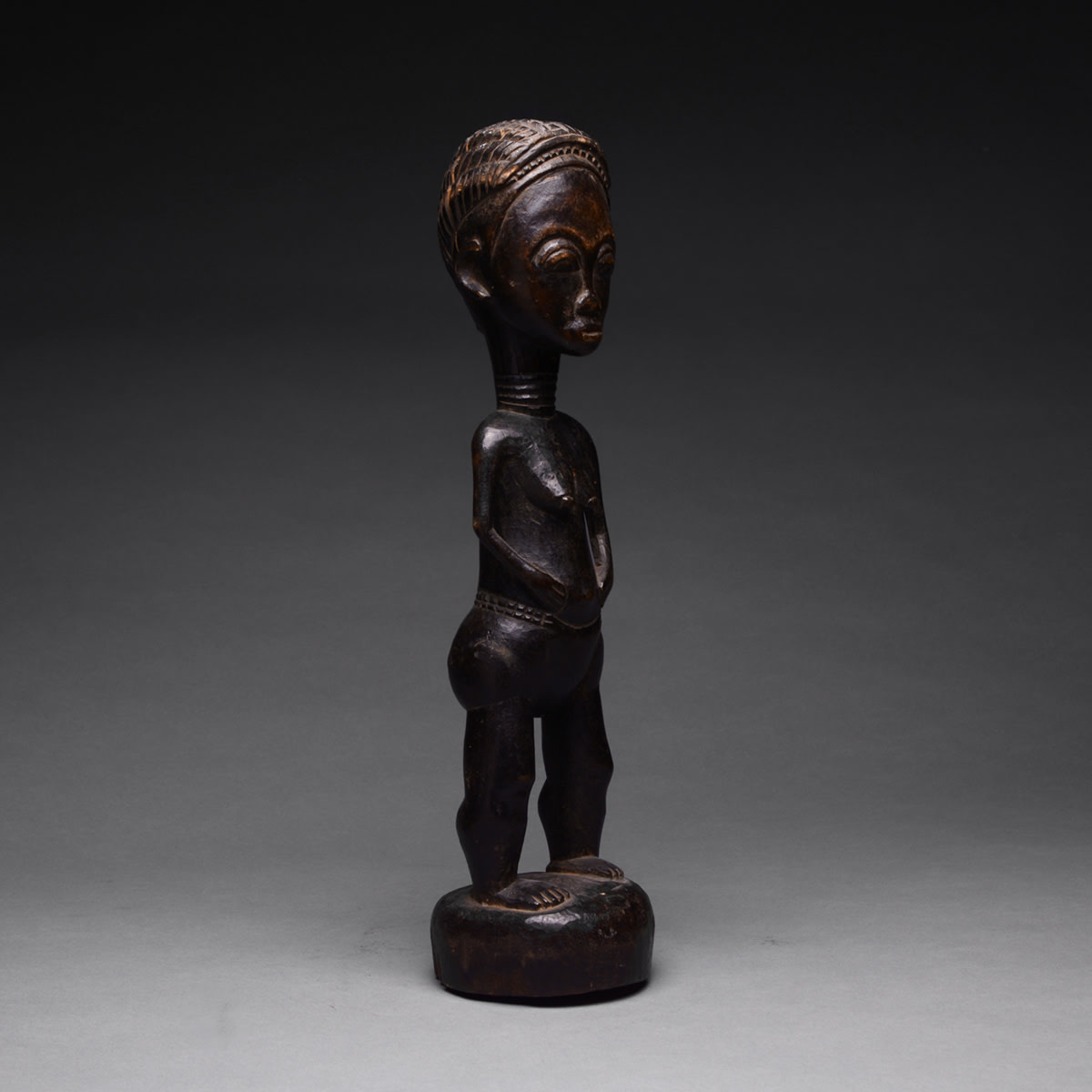Anyi Sculpture of a Woman, 20th Century CE
Wood
35.6 x 9.2 cm
14 1/8 x 3 5/8 in
14 1/8 x 3 5/8 in
PF.5907
Further images
The art of the Anyi tribe is heavily indebted to the style of their neighbors, the Baule. This sculpture represents a hallmark of the Baule style: a spouse from the...
The art of the Anyi tribe is heavily indebted to the style of their neighbors, the Baule. This sculpture represents a hallmark of the Baule style: a spouse from the spiritual world, called a Blolo Bla (Blolo Blian if masculine). Baule people believed that every person has such a spouse. It manifests itself through a series of dreams, usually sexual in nature, and is believed to be responsible for practical and spiritual problems that arise in the life of that individual. Once carved under the direction of a village diviner, the statue is kept in the person’s room and is offered food. Moreover, it is rubbed against the owner’s skin, often giving it a shiny patina.
She stands in a characteristic pose, resting both her hands on her belly next to her protruding navel. Her legs are spread widely apart and she stands a bit straighter than on traditional Baule examples. Her facial features, especially her arching brows that merge into a T-shaped nose, are reveal the strong influence of the Baule. However, the lack of decorative scarification clearly and her thin arms distinguish her from being mislabeled as Baule. The figure wears an elaborate coiffure that has been braided into cornrows. Her body is unadorned save for a row of four necklaces and a cloth hung around her waist, covering her sexuality. Although her genitals may be unelaborated, the sculpture has exaggerated her sagging breasts and nipples in order to suggest the spiritual fertility of the work. This sculpture is a representation of the idealized form of Anyi feminine beauty as expressed utilizing the visual language inherited from the Baule.
She stands in a characteristic pose, resting both her hands on her belly next to her protruding navel. Her legs are spread widely apart and she stands a bit straighter than on traditional Baule examples. Her facial features, especially her arching brows that merge into a T-shaped nose, are reveal the strong influence of the Baule. However, the lack of decorative scarification clearly and her thin arms distinguish her from being mislabeled as Baule. The figure wears an elaborate coiffure that has been braided into cornrows. Her body is unadorned save for a row of four necklaces and a cloth hung around her waist, covering her sexuality. Although her genitals may be unelaborated, the sculpture has exaggerated her sagging breasts and nipples in order to suggest the spiritual fertility of the work. This sculpture is a representation of the idealized form of Anyi feminine beauty as expressed utilizing the visual language inherited from the Baule.







